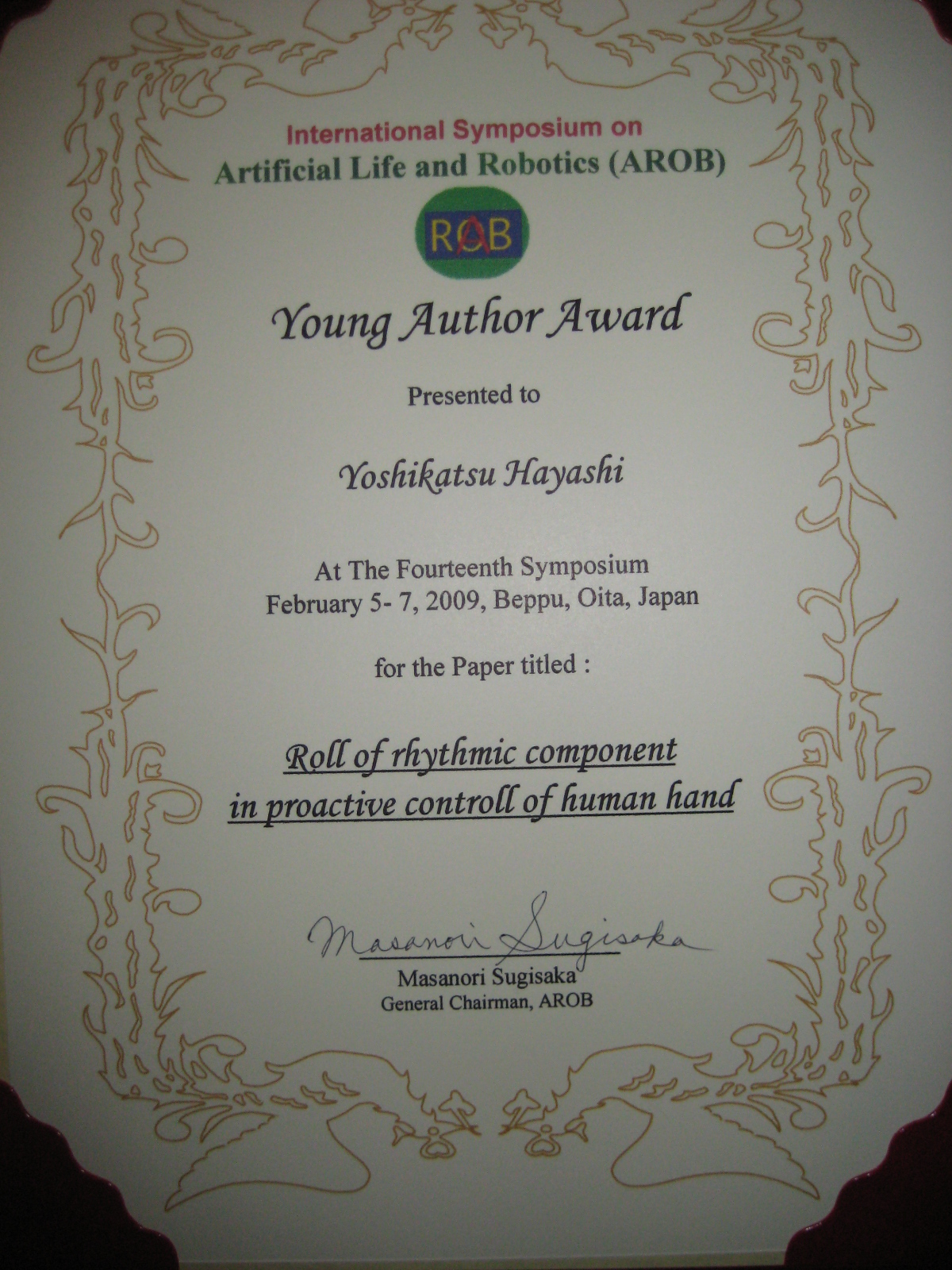若手奨励賞受賞の報告

I am glad to inform about receiving "Young author award" for a presentation in "International Symposium on Artificial Life and Robotics". The tile of paper is "Roll of rythmic component in proactive controll of human hand" with co-authors, Yurie Tamura, Kazuya Sase, Fumihiko Ishida, Yasuji Sawada.
In this paer, we simply proposed following points to answer a question "How do we adapt ourselves to changing environment?"
- 1. Seeing is forseeing. Every one of our actions, every one of our thoughts involves us in what will be(Jacob, Monod).
- 2. We discuss how to trace a moving target with a tracer which work with hand-movement.
- 3. For the given task, human has to perceive not only position of target, but also, velocity of target.
- 4. We suggest following scenario in visual-motor system in human.
- 5. Human perceives sturucture of target orbital and passing time of target.
- 6. Human generates rhythimic component in hand movement based on the perceived structure.
- 7. This rhythim gives time-interval and works to percept velocity(distance/time-interval)
- 8. On the other hand, human performs correction movement for relative position between target and tracer.
- 9. In visual-motor system, human performs feed-back regulation for position correction and feed-forward mechanism for perception of velocity.
Abstract of paper; Evolutionally, the strategy of catching prey should have been important to survive in constantly changing environment. Prediction mechanism should have developed to compensate the delay of sensory-motor system. In previous study, "proactive control" was found, in which motion of hands preceded the virtual moving target. The results implied that the positive phase shift of the hand motion represents the proactive nature of the visual-motor control system to minimize the transient error of the hand motion when the target changes unexpectedly. In our study, visual target moves in circle (13cm in diameter) in computer screen, and each subject is asked to keep track with the target motion in circle by the motion of a cursor. As frequency of target increases, rhythmic component in velocity of cursor was found in spite of the fact that velocity of target is constant. The generation of rhythmic component cannot be explained by only feedback mechanism for the phase shift of target and cursor in sensory-motor system. Therefore, it implies that rhythmic component was generated to predict the velocity of target, which is feed forward mechanism in sensory-motor system. In presentation, we discuss the generation of rhythmic component and its roll in feed forward mechanism.























